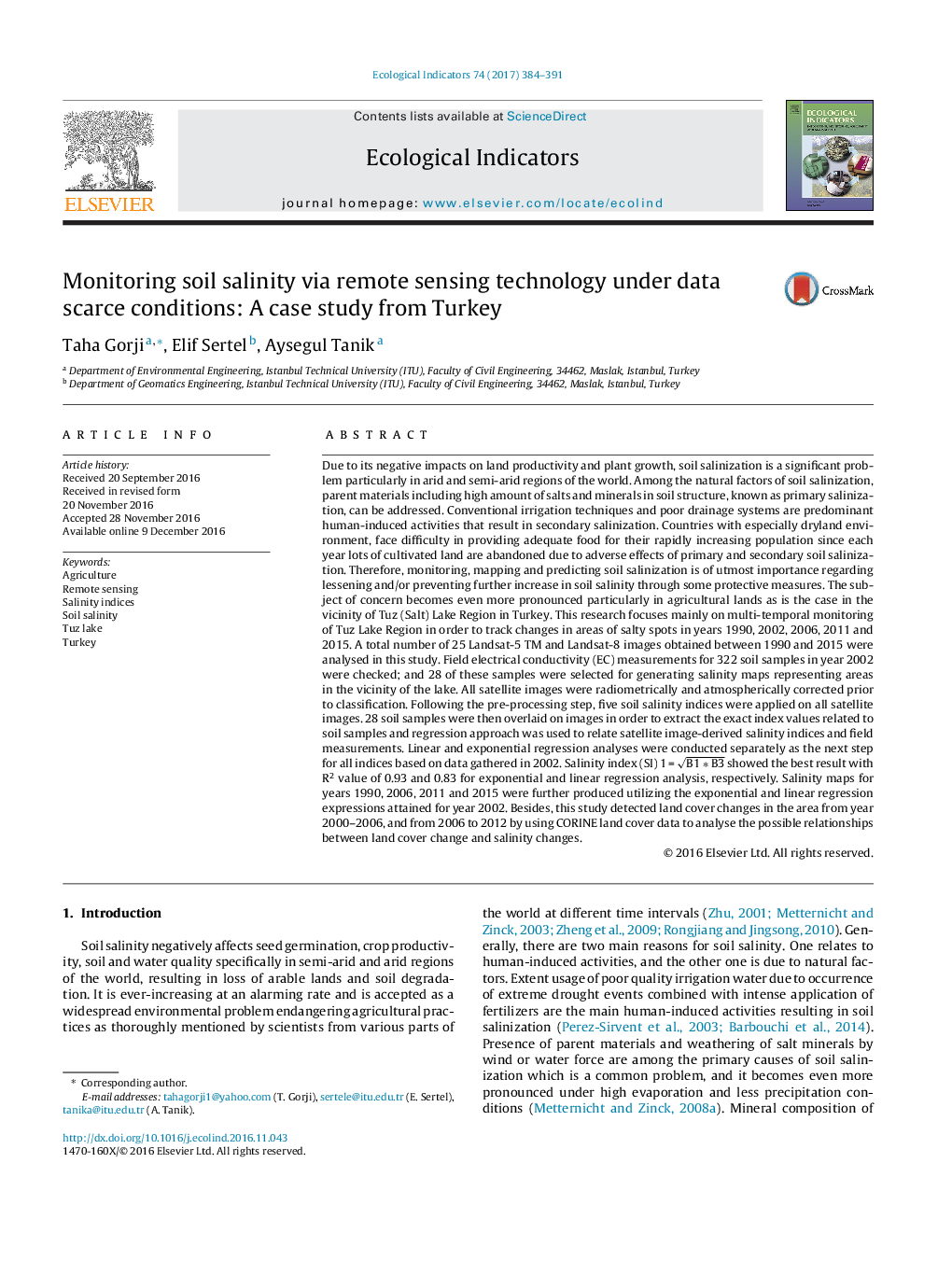| کد مقاله | کد نشریه | سال انتشار | مقاله انگلیسی | نسخه تمام متن |
|---|---|---|---|---|
| 5741864 | 1617128 | 2017 | 8 صفحه PDF | دانلود رایگان |
- Multi-temporal monitoring of Tuz Lake region located in Turkey is conducted for tracking changes in areas of salty spots.
- Five soil salinity indices are applied on all satellite images belonging to years 1990, 2002, 2006, 2011 and 2015.
- Salinity index (SI) 1Â =Â B1*B3 shows the best result.
- Land cover changes in the area are detected by using CORINE land cover data.
- Soil salinization in the region is basically due to natural causes.
Due to its negative impacts on land productivity and plant growth, soil salinization is a significant problem particularly in arid and semi-arid regions of the world. Among the natural factors of soil salinization, parent materials including high amount of salts and minerals in soil structure, known as primary salinization, can be addressed. Conventional irrigation techniques and poor drainage systems are predominant human-induced activities that result in secondary salinization. Countries with especially dryland environment, face difficulty in providing adequate food for their rapidly increasing population since each year lots of cultivated land are abandoned due to adverse effects of primary and secondary soil salinization. Therefore, monitoring, mapping and predicting soil salinization is of utmost importance regarding lessening and/or preventing further increase in soil salinity through some protective measures. The subject of concern becomes even more pronounced particularly in agricultural lands as is the case in the vicinity of Tuz (Salt) Lake Region in Turkey. This research focuses mainly on multi-temporal monitoring of Tuz Lake Region in order to track changes in areas of salty spots in years 1990, 2002, 2006, 2011 and 2015. A total number of 25 Landsat-5 TM and Landsat-8 images obtained between 1990 and 2015 were analysed in this study. Field electrical conductivity (EC) measurements for 322 soil samples in year 2002 were checked; and 28 of these samples were selected for generating salinity maps representing areas in the vicinity of the lake. All satellite images were radiometrically and atmospherically corrected prior to classification. Following the pre-processing step, five soil salinity indices were applied on all satellite images. 28 soil samples were then overlaid on images in order to extract the exact index values related to soil samples and regression approach was used to relate satellite image-derived salinity indices and field measurements. Linear and exponential regression analyses were conducted separately as the next step for all indices based on data gathered in 2002. Salinity index (SI) 1Â =Â B1*B3 showed the best result with R2 value of 0.93 and 0.83 for exponential and linear regression analysis, respectively. Salinity maps for years 1990, 2006, 2011 and 2015 were further produced utilizing the exponential and linear regression expressions attained for year 2002. Besides, this study detected land cover changes in the area from year 2000-2006, and from 2006 to 2012 by using CORINE land cover data to analyse the possible relationships between land cover change and salinity changes.
Journal: Ecological Indicators - Volume 74, March 2017, Pages 384-391
